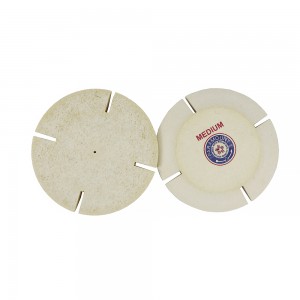The global pandemic has had a profound impact on numerous industries, and the wool felt wheel market is no exception. However, in the post – pandemic era, this market is undergoing a remarkable transformation, with new trends and opportunities emerging.
During the pandemic, many manufacturing industries faced disruptions in their supply chains and production processes. The wool felt wheel industry also experienced shortages of raw materials, as the sourcing of natural wool was affected. In response, manufacturers have been exploring alternative raw material sources and diversifying their supply chains. Some companies are now collaborating with local wool producers in different regions to ensure a more stable supply. This not only reduces the risk of future shortages but also promotes the development of local economies.
The shift towards remote work and DIY projects during the pandemic has also influenced the demand for wool felt wheels. With more people staying at home, there has been a surge in DIY hobbies and home improvement projects. As a result, the demand for small – sized wool felt wheels suitable for DIY use has increased significantly. Retailers are capitalizing on this trend by offering more consumer – friendly packaging and marketing wool felt wheels as essential tools for DIY enthusiasts. Online sales platforms have also seen a spike in the sales of wool felt wheels, as consumers find it convenient to purchase these tools from the comfort of their homes.
In the industrial sector, the post – pandemic focus on cost – effectiveness and efficiency has led to a greater emphasis on the durability and performance of wool felt wheels. Manufacturers are looking for wheels that can last longer and provide better results with fewer replacements. In response, wool felt wheel producers are investing in research and development to improve the quality of their products. They are using advanced manufacturing techniques to create wool felt wheels with higher density and better wear resistance. For example, new heat – treatment processes are being applied to enhance the strength of the wool fibers, making the wheels more durable in demanding industrial applications.
Another significant change in the post – pandemic wool felt wheel market is the increased focus on sustainability. With consumers and businesses becoming more environmentally conscious, there is a growing demand for eco – friendly wool felt wheels. Manufacturers are now using more sustainable production methods, such as reducing water and energy consumption during the felting process. They are also exploring ways to recycle used wool felt wheels, contributing to a circular economy. This sustainable approach not only meets the market demand but also helps companies gain a competitive edge in the post – pandemic business landscape.
The post – pandemic transformation of the wool felt wheel market presents both challenges and opportunities. Manufacturers, suppliers, and retailers need to adapt to these new trends quickly to thrive in the evolving market. By addressing supply chain issues, meeting the changing demands of consumers, and focusing on sustainability, the wool felt wheel industry can look forward to a more stable and prosperous future.

Post time: Jun-06-2025
